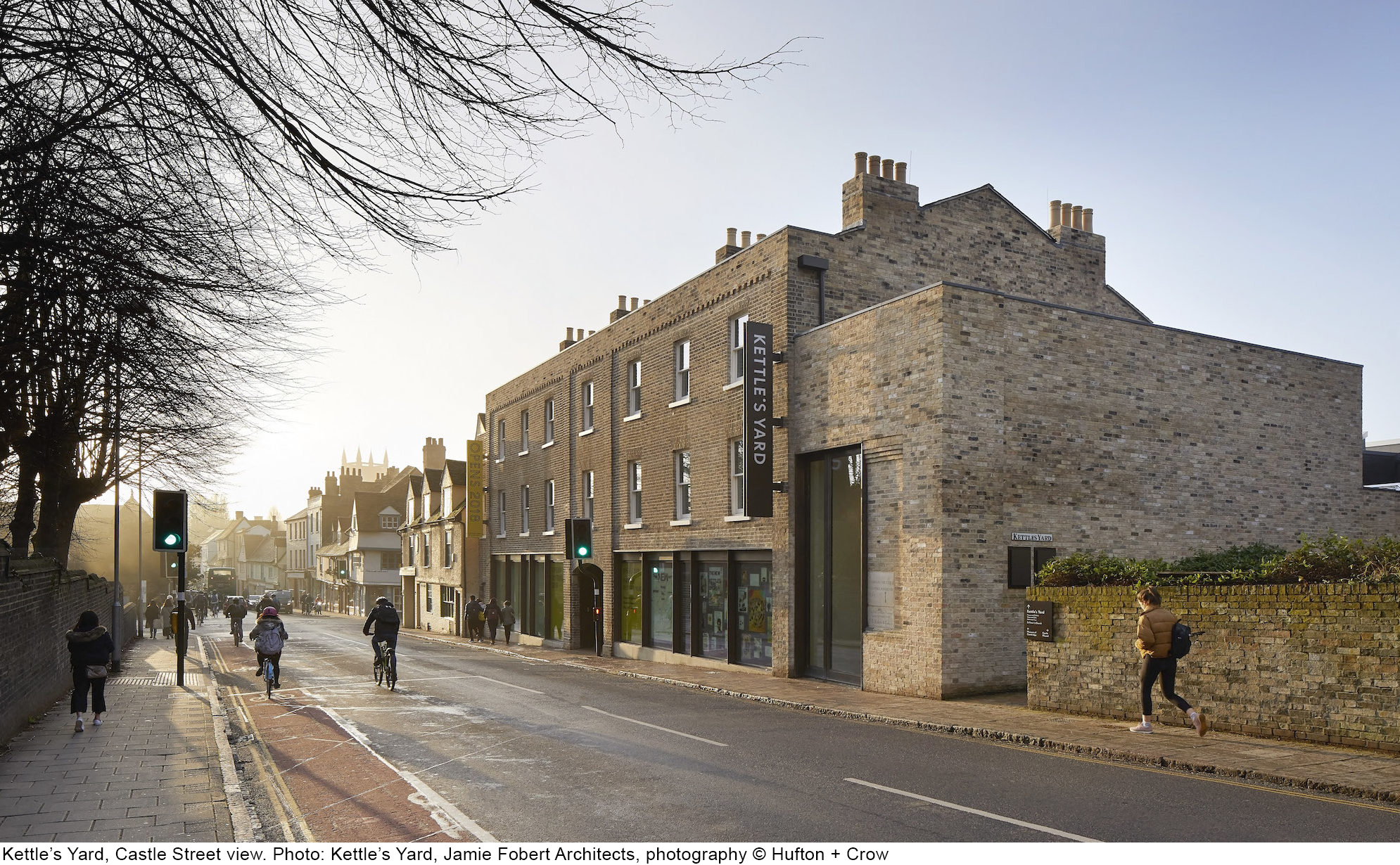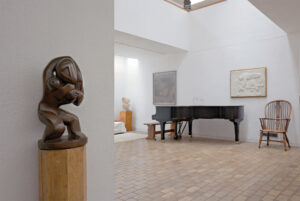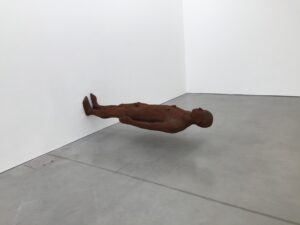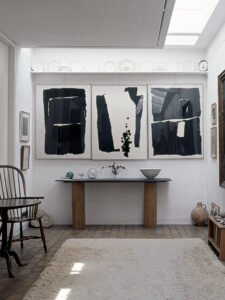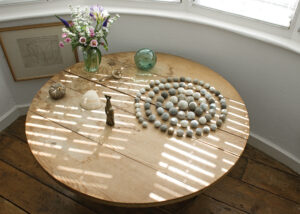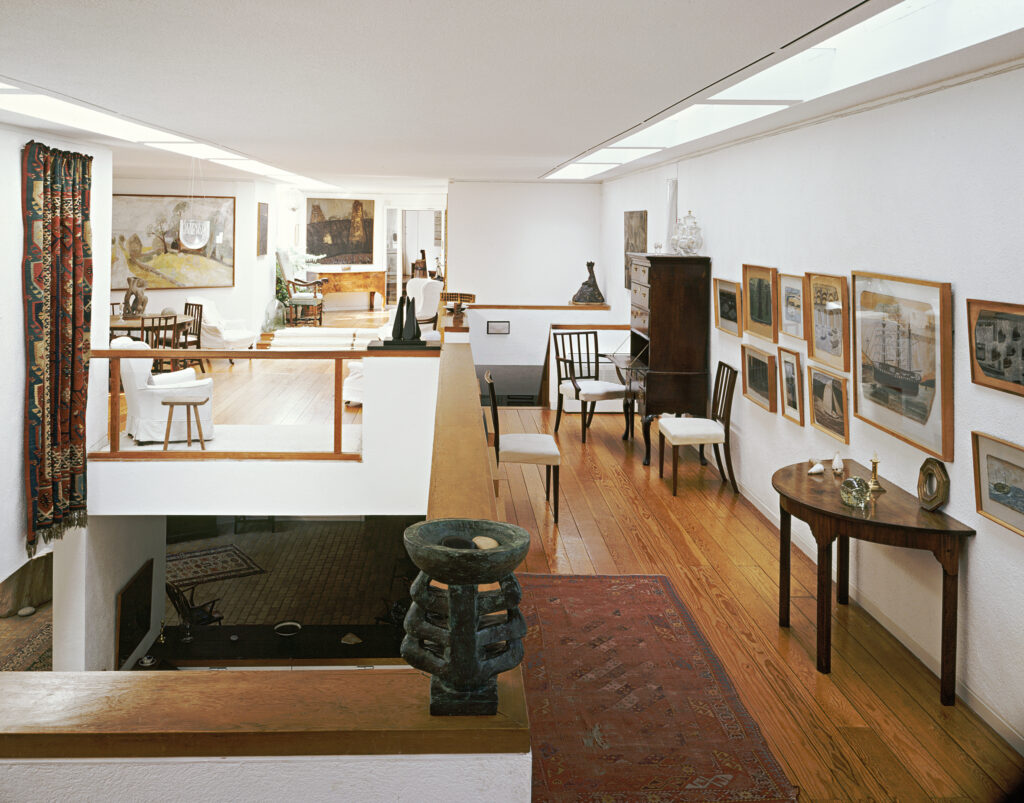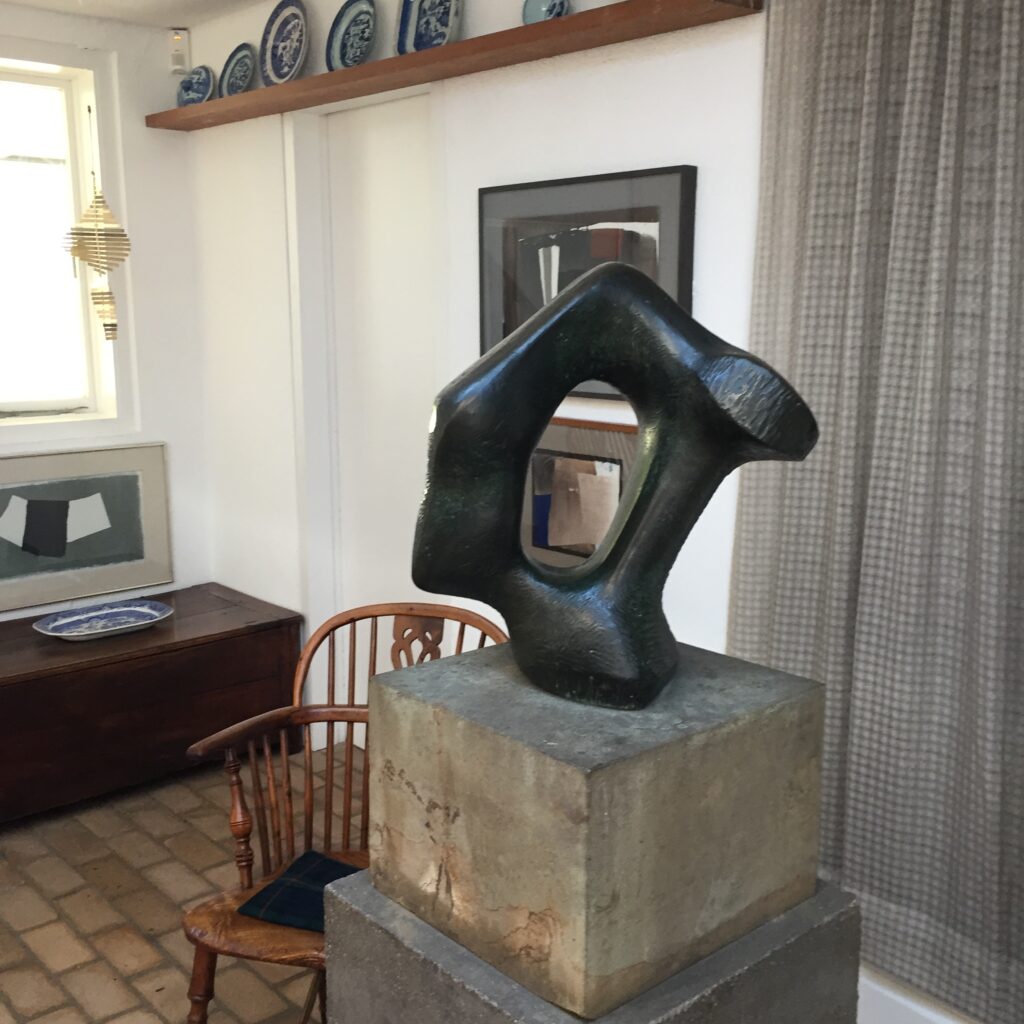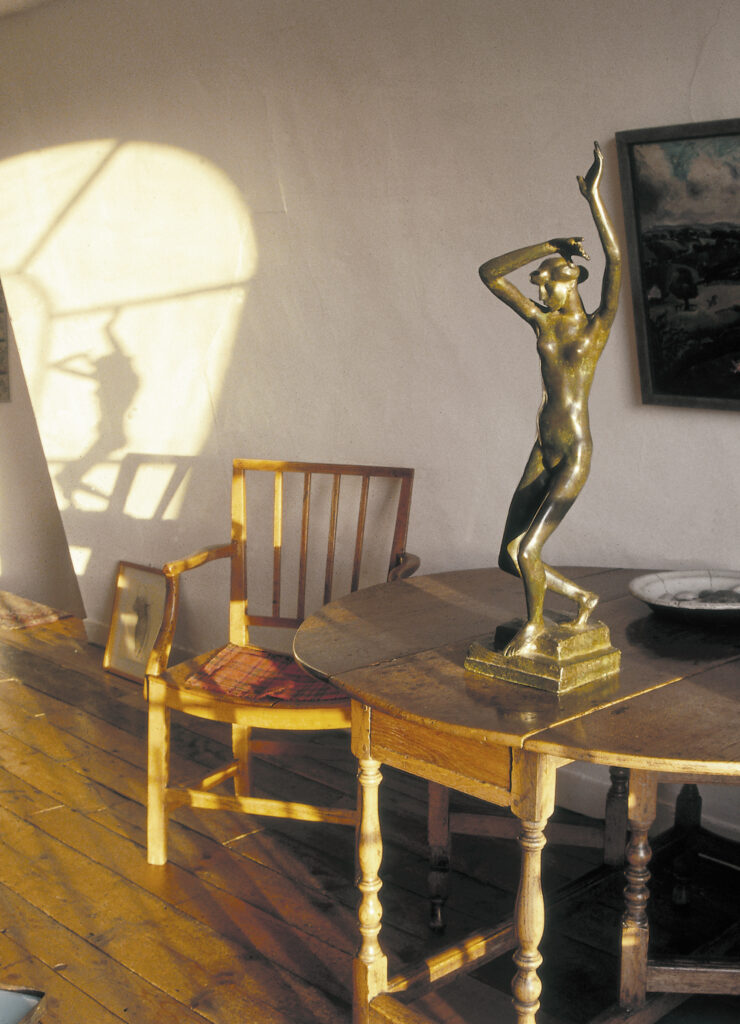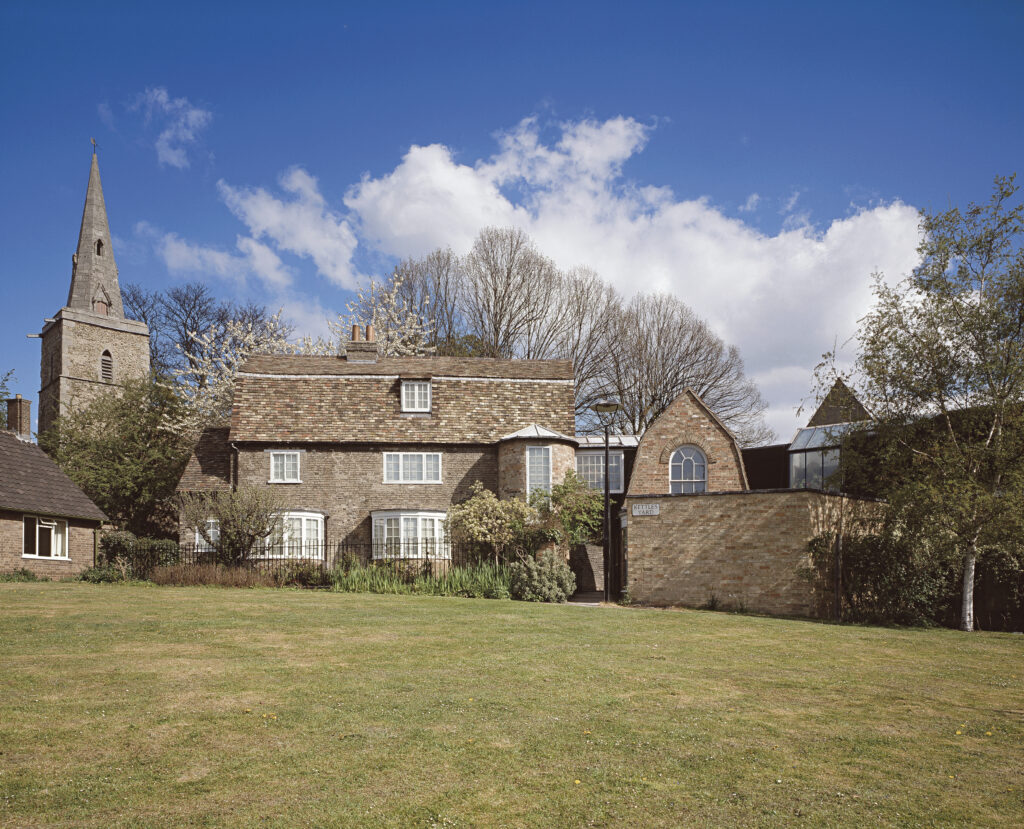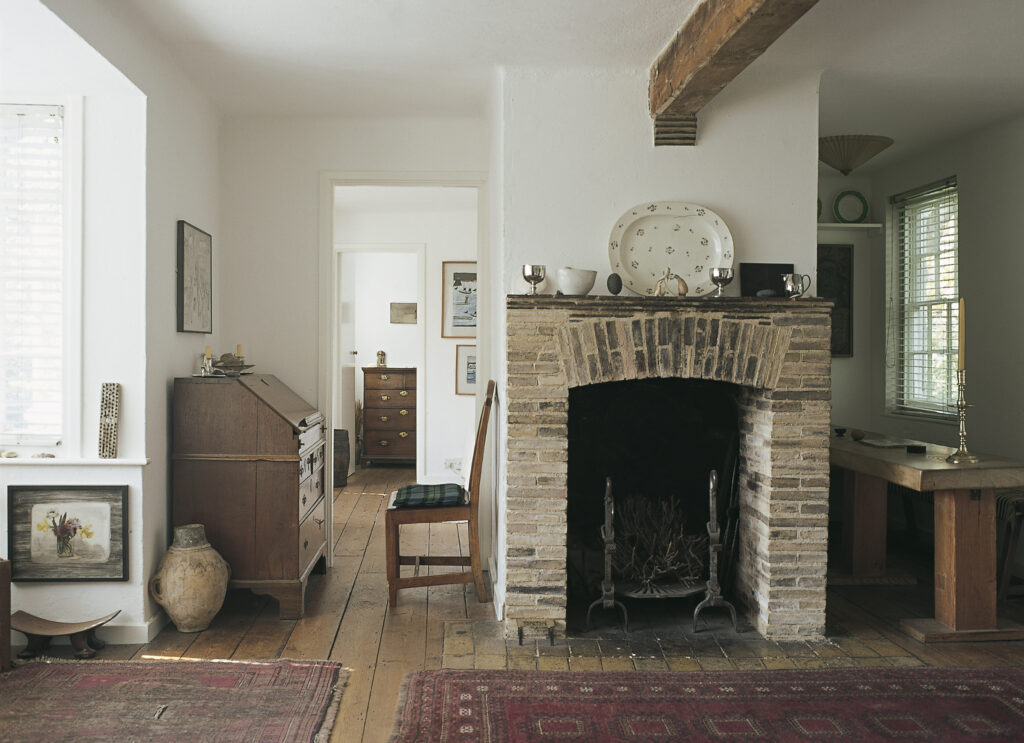An inspirational gem near the heart of the historic city of Cambridge, England, Kettle’s Yard is the University of Cambridge’s modern and contemporary art gallery. It’s also a place with a unique setting and origin. Kettle’s Yard began in 1957 as the home and art collection of Jim and Helen Ede, mixing art, natural objects, and furnishings in intimate spaces that formed a balanced, artistic whole. The Edes gave the house and its collections to the university in 1966, and an expansion in 2018 added an education wing and improved exhibition galleries to help the museum further its mission. Despite changes over the decades, Kettle’s Yard remains a peaceful place to nourish the soul and appreciate the connection of art to daily life.
The story and philosophy of the Edes are inseparable from Kettle’s Yard. After serving in World War I, Jim Ede worked as a curator at the Tate Gallery in London during the 1920s and 1930s, forming friendships with young artists. The Edes gradually purchased an important collection of works including paintings by Alfred Wallis, Winifred and Ben Nicholson, Christopher Wood, David Jones, and Joan Miró, and sculptures by Barbara Hepworth, Henry Moore, Constantin Brancusi, and Henri Gaudier-Brzeska. These became the core of the Kettle’s Yard collection.
After Jim resigned from the Tate in 1936, the Edes lived abroad until the 1950s. Returning to Cambridge, they purchased four derelict 19th-century cottages and combined them into a house called Kettle’s Yard (named for a family in the area). Jim’s vision for Kettle’s Yard was as a place that should not be “an art gallery or museum, nor…simply a collection of art reflecting my taste….It is, rather, a continuing way of life from these last fifty years…” He held daily open houses from 2 to 4 pm for students, who toured the house and discussed art with him; Jim even lent students art to hang in their rooms, a tradition that continues today.
Exploring Kettle’s Yard
Today visitors can explore the house’s rooms, a work of art in themselves, which remain much as they were in the Edes’ day. Although travel to England is restricted now, and Kettle’s Yard is closed due to the Covid-19 pandemic (the website has information about reopening, which may be May 19; tickets are free but require reservations), a room-by-room online tour gives a good sense of the small, low-ceilinged rooms with whitewashed walls. An in-person visit to the house begins in the combined sitting and dining room, where careful arrangements of artworks, glass items, and natural objects set the tone for the viewing experience. In non-pandemic times, visitors can walk around at their own pace; items are not labeled, but docents can answer questions.
Rooms in the house like the Dancer Room reveal the play of light from the windows on art and furnishings. An extension to Kettle’s Yard from the 1970s, when the Edes still lived there, has skylights and natural colors that create a feeling of brightness and illuminate the art and furnishings in areas like the landing. Part of the extension, the library is a light-filled space where visitors can sit and browse the collection of art books and catalogs. On the library walls are many works by Alfred Wallis, a fisherman from Cornwall who became a self-taught artist in his seventies and painted the world of ships and the sea. The lower level of the extension contains spaces for musical concerts and events as well as artwork. Music was essential to life at Kettle’s Yard, and that tradition continues with the museum’s program of new and chamber music.
Jim Ede believed passionately in supporting living artists, and new galleries at Kettle’s Yard that opened in 2018 provide more space, with state-of-the-art display conditions, for changing exhibitions by innovative contemporary artists. These have been as diverse as the 2018 exhibit “Subject” by British sculptor Antony Gormley and an upcoming exhibit called “Untitled: Art on the Conditions of Our Time,” by ten British African diaspora artists.
Connecting with the Community
As in the days of the Edes, Kettle’s Yard believes that art should be accessible to everyone and a part of daily life. An ongoing learning program for different groups offers hands-on exploration, including drop-in Studio Sunday workshops for families in the Clore Learning Centre. Families can pick up an activity sheet and family guide from the information desk, too. The museum is an Art Awards center, supporting people ages 5 to 25 who can earn art certificates in different creative areas. There are also resources for teachers and opportunities for school visits to Kettle’s Yard and virtual tours that can include online artist-led workshops. Open House, another program, is a creative collaboration between the museum and the North Cambridge community. The community selects an Artist in Residence for Kettle’s Yard each year, and the artist explores the area and creates art with the community.
When travel returns, Cambridge is a place to consider not just for the beautiful architecture of its famous colleges but also for smaller treasures like Kettle’s Yard, which offers a fresh way to engage with modern art.
Side Dish
Pubs are popular in Cambridge with its student-focused community, so grab a beer and some pub food at the atmospheric, centuries-old Eagle. RAF and Allied pilots signed their names on its ceiling during World War II, and in 1953 Watson and Crick announced here that they had discovered “the secret of life,” the structure of DNA. Another option is Loch Fyne, run by a Scottish seafood supplier in a former pub across from the Fitzwilliam Museum. The cozy, beamed rooms make a great setting for delicious oysters, Scottish scallops and salmon, and other fish options.
Linda Cabasin is a travel editor and writer who covered the globe at Fodor’s before taking up the freelance life. She’s a contributing editor at Fathom. Follow her on Instagram and Twitter at @lcabasin.

